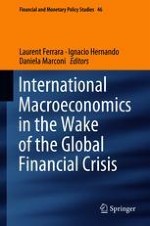2018 | OriginalPaper | Buchkapitel
International Spillovers of Non-standard Monetary Policy: Evidence From Central and Eastern Europe
verfasst von : Alessio Ciarlone, Andrea Colabella
Erschienen in: International Macroeconomics in the Wake of the Global Financial Crisis
Aktivieren Sie unsere intelligente Suche, um passende Fachinhalte oder Patente zu finden.
Wählen Sie Textabschnitte aus um mit Künstlicher Intelligenz passenden Patente zu finden. powered by
Markieren Sie Textabschnitte, um KI-gestützt weitere passende Inhalte zu finden. powered by
